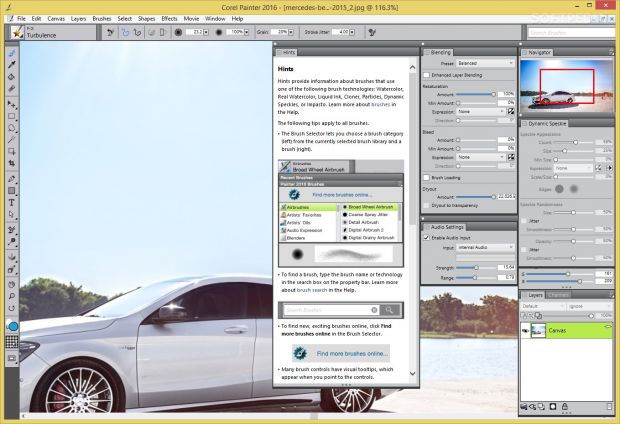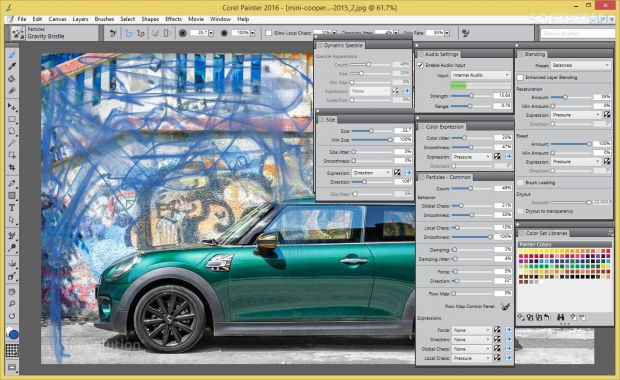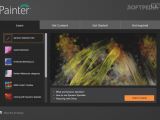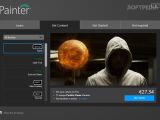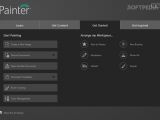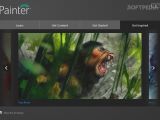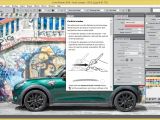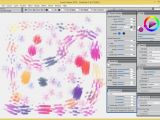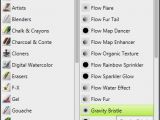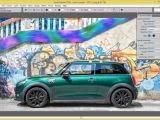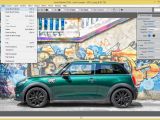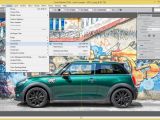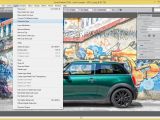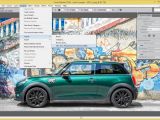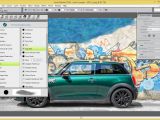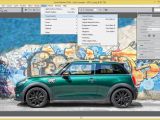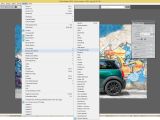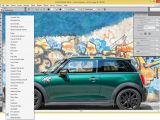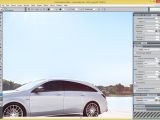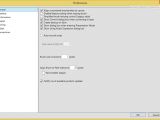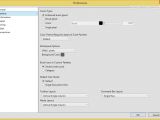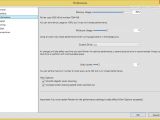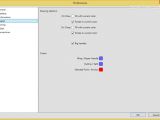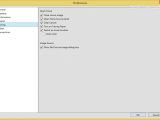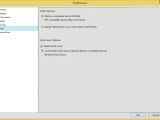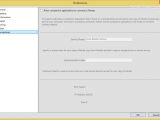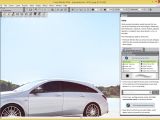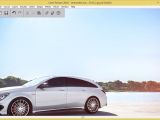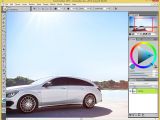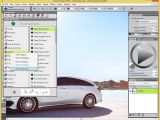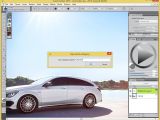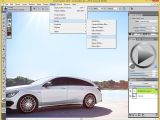Corel Painter 2016 has made it to the top of the list of best graphics editors on the market by offering support for some unique features, such as realistic brushes, rich textures, and special effects.
The previous version of Corel Painter (2015) came with enhancements that included Particle Brushes, Jitter Smoothing for adding randomness to brushstrokes, improved speed and performance, custom UI palette arrangements, fresh content (e.g. papers, gradients, images), real-time stylus and Windows Table PC support, as well as Painter Mobile for Android.
All of the aforementioned features are still present in Corel Painter 2016. The new version adds up more powerful options that focus upon rotatable media (you may change the angle of paper textures and flow maps) and default settings restoration (upon restoring default settings, you can preserve custom brushes, palettes, paper textures, scripts, and more).
What’s more, it comes with support for Dynamic Speckles mode for creating Natural-Media brushstrokes, Audio Expression (the look and feel of a brush are synchronized with an audio input device), Document Views for presenting your design or working on a project, context-sensitive brush hints that display useful topics about brush technologies, visual tooltips on using high and low settings, and Adobe Photoshop brush file import (you may import the brush stamps of pixel-based Photoshop brushes stored in Adobe Brush resources files - ABR file format).
Other fresh features include custom content sharing (you may share content saved to a custom palette), Welcome Screen that appears when you start the app and helps you find out information and the tools you need, 131 new brushes (e.g. acrylics, blenders, cloners, oils, air brush), special media brushes (more specifically, dab types that can be used for applying media to the canvas: Liquid Ink Gravity Particles, Liquid Ink Flow Particles, Liquid Ink Spring Particles, Watercolor Gravity Particles, Watercolor Flow Particles, and Watercolor Spring Particles), and layer blending for producing brushstrokes without white fringes.
Interacting with the GUI
The user interface looks extremely well organized and tidy. It’s up to you to decide how much clutter you want to add in the interface. When I say clutter I mean the tools and settings that can be displayed or hidden in/from the main window, such as Toolbar, Command Bar, Property Bar, Recent Brushes, Brush Selector, and Color Panels.
There’s no proper way to describe the richness of the interface, but to put it bluntly, Corel comes with support for tons of settings for helping you customize the aspect of brushes in detail. It’s like it gives you the freedom to set up the particularities of each hair found in a brush. And this thing matters in terms of graphical design. It matters because every trace left behind by a brush contributes to the final masterpiece.
You can never go wrong by opting for a default display of the palettes. The Property bar, positioned at the top of the screen, is responsible for showing all available parameters for the tool that you activate in the toolbox. It changes depending on the tool type and is pretty similar to the Options bar in Photoshop.
The Brush Selector bar provides quick access to Corel’s brush categories and brush types that can be activated with simple clicks, while the Color panel can be used for altering the colors with the aid of the Hue Ring and Saturation/Value Triangle. The Clone Color mode allows you to apply the same color used in a source image. There is also support for a Main Color and Additional Color, which are different than Photoshop’s Foreground and Background Colors. For example, the additional color does not interfere with the canvas as in Photoshop.
There are a lot of textures that you can choose from. A basic one is loaded at startup, but you can access rich ones from the Paper Libraries. The drawing process can be accomplished with the aid of a graphics tablet or computer mouse.
You can choose from various workspace layouts (also called ‘palette arrangements’), namely New to Painter (useful for rookies), New Brushes (it gets you quick access to the newest brush technologies in the current version), Simple (it includes essential tools and is suitable for small screens), Photo Art (it shows tools that can be used for cloning, photos, textures, and paintings; ideal for photo artists), Illustration (it provides access to palettes used for creating illustrations), and Default (it is suitable for most workflows).
New changes to Painter’s GUI
The new Welcome Screen can be used for starting or opening an image, choosing a workspace, accessing online learning videos, looking for new brushes and other online contents, as well as visiting artwork galleries. It provides a good start for less experienced users who do not know where to get started.
Context-sensitive hints are displayed about brushes. It pretty much depends on the brush type that you are using. You can find out quick information about how to make the most out of Particles, Watercolor, and other brushes.
Painter 2016 makes it easier to switch between document views via the toolbox, Window menu, and keyboard shortcuts. The Single Document View focuses solely on the active design, while the Presentation Mode is useful for making some room in the painting environment by hiding the menu bar and taskbar of the OS, and leaving only important controls.
What’s more, you can now personalize the workspace by modifying the UI color scheme. You may choose from three options, namely Dark, Frost, Sepia (& Default Grey). Plus, you can also update the background color to any color in the color wheel.
Notable editing tools
The new Dynamic Speckle technology is based on Particle System physics and brush thickness control. It allows the creation of a continuous brushstroke from small spots of color of speckles. The Dynamic Speckles can be used particularly with Bristle, RealBristle, and Particle brushes in order to fully assess its capabilities. The brushstrokes have a remarkable characteristic: they are dynamic and generated as you paint.
Another new thing helps you change the angle of paper texture and flow maps in any direction, giving you the possibility of creating fresh and inspiring looks.
Painter allows the importing of Photoshop files that include pixel-based layers and layer masks. Layers and layer masks can be accessed and edited via the Layers panel, pretty much the same as in Photoshop. You can add brush stamps of pixel-based Photoshop brushes stored in ABR files that contain a collection of brushes, including shape, texture, dynamics, and other brush details. You should know that additional brush attributes are not imported, but you are allowed to customize them in Corel Painter.
The program is designed to simulate creativity by giving you the choice to work with a wide range of natural art tools, such as pencils, charcoals, pens, chalks, markers, paintbrushes, watercolors, and more. A search bar is integrated in the main window for helping you look for a particular brush.
Custom palettes can be created and exported to BOX file format. The BOX file includes details about all custom brushes, papers, patterns, and flow maps in the palette.
Painter 2016 comes with support for a wide range of brushes, which are grouped into different categories, such as Airbrushes, Artists’ Oils, Calligraphy, Pencils, and Watercolor. You can check out the most recently used brushes and create custom brushes.
Various editing utilities are included in the toolbox, so be prepared to dedicate some of your time to discovering them. You can paint on the canvas or a layer using a brush, pick a color from an existing image, fill in areas with media (e.g. color, gradient, pattern), erase data, and make use of various selection tools (e.g. Rectangular Selection, Lasso, Magic Wand).
Plus, you can work with shape (Pen, Rectangular Shape, Text, Scissors) and photo (e.g. Cloner, Rubber Stamp) tools, as well as other smart functions like magnifier, page rotator, and mirror painting.
The Brush Library is refined, looks clean and organized, and works faster. The 2016 library includes some of the best of Painter brushes, refined from 800 to 362.
Audio expression
Audio expression is a brand-new feature introduced in Painter 2016 that makes it possible for music to interact with your brushstrokes. You can play sound from SoundCloud, Spotify, or iTunes, or use the microphone to see how the program interacts with your voice. This features spices up things a little bit and adds chaos to your designs. For example, if you speak louder, the size of the brush is automatically increased, while colors are altered.
The program uses audio streams in order to modify the look and feel of the brushes. In order to link the brush effects to an audio input, you need to enable the Audio Input from the Audio Settings Panel, pick the preferred audio source (microphone or internal audio), and open one of the following panels: Size, Opacity, Stroke Jitter, Color Variability, Grain, and others. Plus, you can alter the strength of the audio signal and set the range of the audio expression. The final step requires only clicking on the Audio expression button, and you are ready to try out the new drawing mode on the fly.
Performance improvements
Corel Painter 2016 solved some issues related to stability and enhances the brush speed (up to three times faster than 2015). We have tried out Painter on Windows 8.1 Pro and it ran smoothly during our tests. CPU and memory resources are high but this is to be expected from such an advanced program. Brushstrokes can be executed using natural and fast movements. Undo and redo actions are performed quickly.
The Good
Traditional artists have the opportunity to paint using natural tools for mimicking real effects. Working with a blank canvas to create digital art is possible in Painter 2016 thanks to the richness of textures and brush technologies. Image cloning and painting functions can be used by photographers in order to transform captured images into digital art pieces.
 14 DAY TRIAL //
14 DAY TRIAL // 